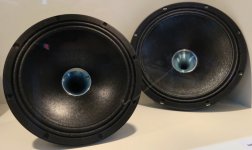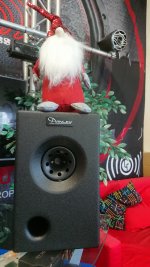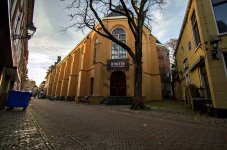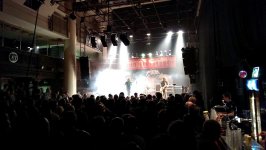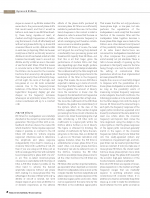A DIY alternative to the Dynamikks Ultima at a fraction of the price.
However, there's 1 hurdle.
I would take either the BMS 10C262 or 12C362 (left and right in the first pictur), provided the metal exit section can be omitted to order or removed afterwards. You also need a CAD drawing of the compression driver's exit. Then print, or have machined a custom exit section, or better, a complete horn that matches and attaches to the compression driver's exit.
I prefer an asymmetrical horn. Either rectangular or asymmetrical, the horn must be large.
Then make holes/slits at the correct distance from the exit (XO shall be about 800 Hz for the 12" and slightly higher for the 10").
The concept is similar to the Danley Studio One, only much bigger.
To cover 20-150Hz, I would probably slot- or hornload two BMS 15" or 18" subwoofers, et voilà!
Obviously, this is a far too simple sketch, because it must be determined, among other things, whether the woofer will have a compression chamber or a vent.
However, there's 1 hurdle.
I would take either the BMS 10C262 or 12C362 (left and right in the first pictur), provided the metal exit section can be omitted to order or removed afterwards. You also need a CAD drawing of the compression driver's exit. Then print, or have machined a custom exit section, or better, a complete horn that matches and attaches to the compression driver's exit.
I prefer an asymmetrical horn. Either rectangular or asymmetrical, the horn must be large.
Then make holes/slits at the correct distance from the exit (XO shall be about 800 Hz for the 12" and slightly higher for the 10").
The concept is similar to the Danley Studio One, only much bigger.
To cover 20-150Hz, I would probably slot- or hornload two BMS 15" or 18" subwoofers, et voilà!
Obviously, this is a far too simple sketch, because it must be determined, among other things, whether the woofer will have a compression chamber or a vent.
Attachments
Last edited:
Indeed Mark, the Synergies are a special breed and the point source nature + controlled directivity facilitate a special listening experience. The SH50's somehow reminded me of giant headphones, but in a good way. There's a certain intimacy involved and Bateman's description of a holographic soundstage is striking.
Like Bateman, I also think the SH50's excell with certain types of music. With rock, punk, new wave and similar music - I fear, including Led Zeppelin, something seems off. A band still sounds like a band, but somehow it seems as if the members are playing inside a tunnel, or in my case, several tunnels. You are listening from outside the tunnel.
I do believe one can make progress with any speaker that one has. Taking the time to analyze the results "in room" and optimizing those results. That has been my journey with the arrays but if I had different speakers like Synergies or horns, I would have followed the same path.
Optimize what you've got, look at what it does within the room and take control over it.
Basically I can steer all parameters of the stage. Control it to my liking up to the boundaries that remain (like not being allowed more damping panels).
Still, this gives a lot of control over the sound out in the room, once you figure out what does what. It isn't a sweet "spot only" upgrade. My goal has always been: sweet sound all over the room, excellent sweet spot behavior.
Whatever you choose to run with, it is worth it to learn to "read the room" with the speakers in it.
At least that's what 5 years of running experiments has taught me. There's always room for improvement. But back-up and document what works! Not all experiments I did have worked out that well. But it probably did teach me something worthwhile knowing/learning. I even do any experiment I think of more than once, to be sure I didn't leave some key ingredient out. Usually I have a long time between those repetitions, as I might have learned something useful in-between.
Analyze what happens, try and find ways to solve it. One thing at a time. Control what you can control, never change more than one parameter at a time.
Even within DRC, there has been a huge variation in how I could make the arrays image. It has taken me months to find out what worked best. You literary can't see the differences in FR plots or waterfall plots. Until you turn them inside out and see what happens (in detail) over time. Tonality is much more forgiving than imaging. Yet the room still plays a large part in both. Their time frame for optimization is totally different though. Get the basic imaging (first wave front that hits the ears) right first, with tonality tweaks and ambiance you will be able to solidify those results.
Never forget you're listening with two ears and more important: a brain that works hard to make sense of it. My goal: have the brain work less hard to make it convincing. Help it in any way you can. 😀
Last edited:
Anyone listened to the 3 different Zep tracks? I did not see any comments on that.
I regret not having the arrays up and running, I'd like to hear the difference between Ro808's track and the High Res. I already know how the third track sounds.
They should be played back at the same average levels to compare, there's quite a difference between the volume levels as is.
I regret not having the arrays up and running, I'd like to hear the difference between Ro808's track and the High Res. I already know how the third track sounds.
They should be played back at the same average levels to compare, there's quite a difference between the volume levels as is.
Yep, I did, but only through mediocore headphones.
The DSD seems to sound most detailed, spacious, but I have to compare the tracks again through some decent monitors. Perhaps tonight.
I have never really liked listening through headphones. A lot of the energy seems to get lost, especially with band music.
Was this the source of the last snippet?
Led Zeppelin III - 1970 (Atlantic 8122796449, EU, Remastered), Deluxe Edition
The DSD seems to sound most detailed, spacious, but I have to compare the tracks again through some decent monitors. Perhaps tonight.
I have never really liked listening through headphones. A lot of the energy seems to get lost, especially with band music.
Was this the source of the last snippet?
Led Zeppelin III - 1970 (Atlantic 8122796449, EU, Remastered), Deluxe Edition
The two I put up are the High Res version from Highresaudio.com being the 2014 remaster with inverted color sleeve and the Japan SHM-CD WPRC-13132. I think the High Res 2014 release is the same as the Atlantic – 8122796449 CD (also 2014 Remaster), the Japan issue is a 2008 Remaster and might be closely related to a Boxed set of that period. I do have that Boxed set too, a set of mini LP's with 4 extra songs on Coda. (some of which I had already on vinyl Singles)
For me, I can't make up a preference on headphones either. The DSD is detailed, sounds like the same Master as the High Res I put up though. Slight differences in balance.
I'm sure I don't have all of them, but I do recognize a few 🙂. I don't have my CD's handy though, as they've been boxed up for our living room renovation. My Japanese SHM-CD is Atlantic WPCR-13132. The High Res Audio is this one. In my opinion well worth the asking price, even the Japanese versions (if you can find them) are more expensive second hand. I have the FLAC 96 version. Cannot remember seeing the MQA before. I mentioned 2015, the first albums were released in 2014.
The second half of the catalog came one year later. The added bonus tracks are fun too!
For me, I can't make up a preference on headphones either. The DSD is detailed, sounds like the same Master as the High Res I put up though. Slight differences in balance.
Indeed Mark, the Synergies are a special breed and the point source nature + controlled directivity facilitate a special listening experience. The SH50's somehow reminded me of giant headphones, but in a good way. There's a certain intimacy involved and Bateman's description of a holographic soundstage is striking.
Like Bateman, I also think the SH50's excell with certain types of music. With rock, punk, new wave and similar music - I fear, including Led Zeppelin, something seems off. A band still sounds like a band, but somehow it seems as if the members are playing inside a tunnel, or in my case, several tunnels. You are listening from outside the tunnel.
Hi Ro808,
I think there is a likelihood that the SH-50's narrow pattern is the cause of the tunnel effect. Too much of a sonic flashlight, i think.
When I had three different patterns running side by side, i noticed the narrower the pattern, the more it sounded like the acoustic origin moved deeper into the horn towards the throat.
It's kinda funny, but I've found listening closer in distance to the synergies often sounds a bit fuller in the bottom. It's making me think hard about what radiation patterns really mean. (Smoke rolling out my ears haha)
Not something I really like...i prefer distance to have as little an impact as possible on tonality. My line arrays handled this a bit better, as i seem to remember.
I must have mentioned it before... This is a Venue that I truly loved for it's sound:

Poppodium Romein, Leeuwarden.
An old Church with large heavy drapes, intimate, yet great sound.

Source of the picture: poppodium-romein-leeuwarden-yp-hotspot-2 - LeeuwarderNet, I Guess I'll probably be there somewhere in that crowd.
Been there until it closed down, the newer Venues I visited after that did not quite have an atmosphere like it.
If anything, that's the sound (or rather the atmosphere) I want to experience in my room... one can dream right? 😀
I've been in lots of bigger places, lots of smaller places, similar sized spaces but there was something about that specific place that just worked.
I also liked "de Melkweg" and "Paradiso" but "Romein" stood out for it's sonic presence.
Poppodium Romein, Leeuwarden.
An old Church with large heavy drapes, intimate, yet great sound.
Source of the picture: poppodium-romein-leeuwarden-yp-hotspot-2 - LeeuwarderNet, I Guess I'll probably be there somewhere in that crowd.
Been there until it closed down, the newer Venues I visited after that did not quite have an atmosphere like it.
If anything, that's the sound (or rather the atmosphere) I want to experience in my room... one can dream right? 😀
I've been in lots of bigger places, lots of smaller places, similar sized spaces but there was something about that specific place that just worked.
I also liked "de Melkweg" and "Paradiso" but "Romein" stood out for it's sonic presence.
Attachments
Last edited:
While this story above has nothing to do with imaging, it is what makes a performance more memorable, at least speaking for myself.
In our home, we can get way better imaging than in a venue like that, but the added room sound can kill the experience out in the room.
By absorbing early queues and adding a virtual overlay, not all that much but just a hint of it, the experience is far more enjoyable for me.
More like being at a performance, rather than listening trough a window or having a scaled down version of it in your room.
Not an easy goal, but a very satisfying one. One that changes with the material I play. Before I started down that road, the room's
signature was present and the same/similar on all songs. On some songs it worked, but not on others.
The more I was able to hide my room properties, the more it started to sound pleasing on lots of material, yet changing with different
songs or genres. More pleasing everywhere in the room, actually. Even when listening trough an open door.
I guess that happens when the indirect arriving sound (arriving late enough not to obscure detail) is in harmony (mimics the FR response)
with the direct sound. It sure did not start out that way. I remember having a great sweet spot, but I disliked how it sounded when I was
walking out of the room, rethinking if I made the right choice with these speakers. It wasn't until I put up all three panels that things got
a little better, and it only really worked when I added the late virtual ambience.
Even sitting on the doorstep of my kitchen (doorway outside) I could still enjoy it.
In our home, we can get way better imaging than in a venue like that, but the added room sound can kill the experience out in the room.
By absorbing early queues and adding a virtual overlay, not all that much but just a hint of it, the experience is far more enjoyable for me.
More like being at a performance, rather than listening trough a window or having a scaled down version of it in your room.
Not an easy goal, but a very satisfying one. One that changes with the material I play. Before I started down that road, the room's
signature was present and the same/similar on all songs. On some songs it worked, but not on others.
The more I was able to hide my room properties, the more it started to sound pleasing on lots of material, yet changing with different
songs or genres. More pleasing everywhere in the room, actually. Even when listening trough an open door.
I guess that happens when the indirect arriving sound (arriving late enough not to obscure detail) is in harmony (mimics the FR response)
with the direct sound. It sure did not start out that way. I remember having a great sweet spot, but I disliked how it sounded when I was
walking out of the room, rethinking if I made the right choice with these speakers. It wasn't until I put up all three panels that things got
a little better, and it only really worked when I added the late virtual ambience.
Even sitting on the doorstep of my kitchen (doorway outside) I could still enjoy it.
Last edited:
Hi Ro808,
I think there is a likelihood that the SH-50's narrow pattern is the cause of the tunnel effect. Too much of a sonic flashlight, i think.
When I had three different patterns running side by side, i noticed the narrower the pattern, the more it sounded like the acoustic origin moved deeper into the horn towards the throat.
It's kinda funny, but I've found listening closer in distance to the synergies often sounds a bit fuller in the bottom. It's making me think hard about what radiation patterns really mean. (Smoke rolling out my ears haha)
Not something I really like...i prefer distance to have as little an impact as possible on tonality. My line arrays handled this a bit better, as i seem to remember.
This all makes sense.
The symptons you describe are related to horns in general. It's what classic horn freaks are addicted to: the highly energized beam that almost seems to make the music tangible.
Conical synergy horns don't energize the air in the same way, because they lack the loading characteristics, but the acoustic origin does also seem to move back with narrow coverage and subsequently longer horn path (relative to the mouth size). The lack of loading is compensated by the mids, so the net effect is somewhat similar to a single driver behind a expo or tractrix horn, though not the same.
The big Jericho's with their wider coverage and relatively shallow horn doesn't seem to suffer from the tunnel-effect.
I'm also a proponent of wide coverage and listening at some distance from the loudspeakers.
This is a Venue that I truly loved for it's sound...
...I also liked "de Melkweg" and "Paradiso" but "Romein" stood out for it's sonic presence.
This was the P.A. system in the big room of Romein:
Dynacord Cobra 2
6x Cobra top
8x Cobra 18” sub
Dynacord/Electrovoice DSP600 system processor
Chevin Amps
The Cobra system is almost vintage by today's standards, but it was very populair in NL.
I guess the DSP 600 was an important contributor to the sound quality of the system. The same applies to the Chevin amps, that I have also owned and appreciated.
The DSP 600 (= Electro-Voice DX46) was probably one of the most advanced and best sounding loudspeaker management systems at the time of its launch, more than 10 years ago.
Attachments
-
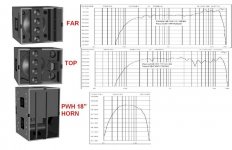 dynacord-cobra-pwh_id1950_2.jpg88.3 KB · Views: 185
dynacord-cobra-pwh_id1950_2.jpg88.3 KB · Views: 185 -
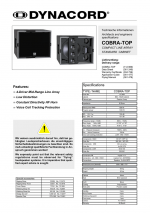 009155031_1-5f17b481d904f4aaa302e2dac2a80343.png121.5 KB · Views: 128
009155031_1-5f17b481d904f4aaa302e2dac2a80343.png121.5 KB · Views: 128 -
 DSP600 Production Partner_Pagina_9.png709.8 KB · Views: 119
DSP600 Production Partner_Pagina_9.png709.8 KB · Views: 119 -
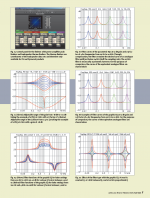 DSP600 Production Partner_Pagina_7.png697.2 KB · Views: 125
DSP600 Production Partner_Pagina_7.png697.2 KB · Views: 125 -
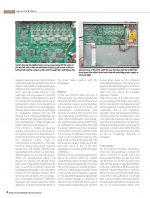 DSP600 Production Partner_Pagina_6.png700 KB · Views: 125
DSP600 Production Partner_Pagina_6.png700 KB · Views: 125 -
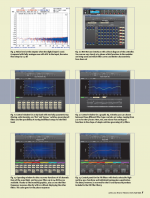 DSP600 Production Partner_Pagina_5.png844.1 KB · Views: 120
DSP600 Production Partner_Pagina_5.png844.1 KB · Views: 120 -
 DSP600 Production Partner_Pagina_4.png296.4 KB · Views: 121
DSP600 Production Partner_Pagina_4.png296.4 KB · Views: 121 -
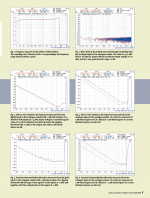 DSP600 Production Partner_Pagina_3.png599.5 KB · Views: 118
DSP600 Production Partner_Pagina_3.png599.5 KB · Views: 118 -
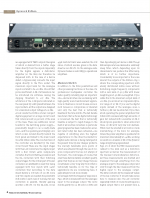 DSP600 Production Partner_Pagina_2.png417.9 KB · Views: 120
DSP600 Production Partner_Pagina_2.png417.9 KB · Views: 120 -
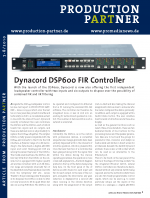 DSP600 Production Partner_Pagina_1.png362.2 KB · Views: 139
DSP600 Production Partner_Pagina_1.png362.2 KB · Views: 139
Last edited:
It wasn't the installation alone... the venue/building (shape/size etc.) helped a lot!
The newer replacement (Neushoorn) just doesn't have that same (acoustic) feel to it...
The newer replacement (Neushoorn) just doesn't have that same (acoustic) feel to it...
@wesayso, not part of your comparison but I played the snippets on my K5/XKi's just to hear what you were listening to. Not being a Zep fan I didn't like the vocals but loved the instrumental parts. I'm more a fan of Gary Moore's "Still Got the Blues".
I like your philosophy of getting the sound you want in your room, that's more important than lab spec sheets or performance elsewhere.
I like your philosophy of getting the sound you want in your room, that's more important than lab spec sheets or performance elsewhere.
Last edited:
It wasn't the installation alone... the venue/building (shape/size etc.) helped a lot!
The newer replacement (Neushoorn) just doesn't have that same (acoustic) feel to it...
Yep, some spaces work better than others, even if the building used to be a monastery, like Romein.
The old Tivoli building in Utrecht, originally also a monastery that was built in the 13th century,
had a nice atmosphere, but horrifying acoustics and a dreadful PA system.
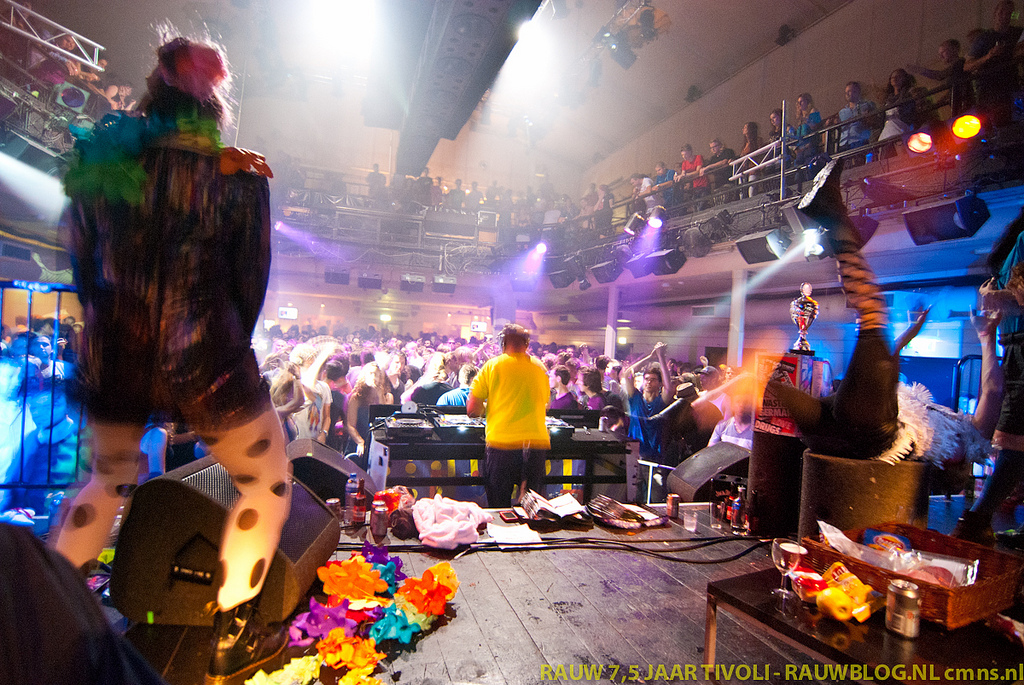
Last edited:
anything built in the thirteenth century would have been tailored to chants and choirs and the RT60 of the room is likely well over two seconds...good luck trying to get anything else to sound good in that space without a major overhaul of the acoustics!
Hi Eddie, I think this quote sums it up what that attention to the room can do:
Hi Ronald
Thanks a lot for the time you spend with BYRTT and I friday and saturday.
I know the sound of the line arrays, but your attention to details and all you work with room damping and correction really has payed off.
It is amazing how little you are aware of that you are listening in a relatively small environment, because the arrays can recreate , when in the recording, a very big room without losing focus on the instruments or voices.
And now I know , why the subwoofer project has been delayed for such a long time😛😀
wesayso's towers are probably among the very few loudspeaker systems capable recreating the largest spaces with the smallest footprint.
Wishing everyone a safe 2021, where we get our freedom back...
With lot's of music to pull us through!
With lot's of music to pull us through!
- Home
- Loudspeakers
- Full Range
- The making of: The Two Towers (a 25 driver Full Range line array)
